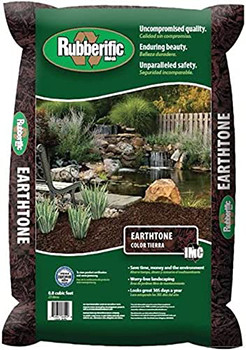What Are the Best Mulches for Tomatoes in Containers? 6 Great Options
-

- Last updated:
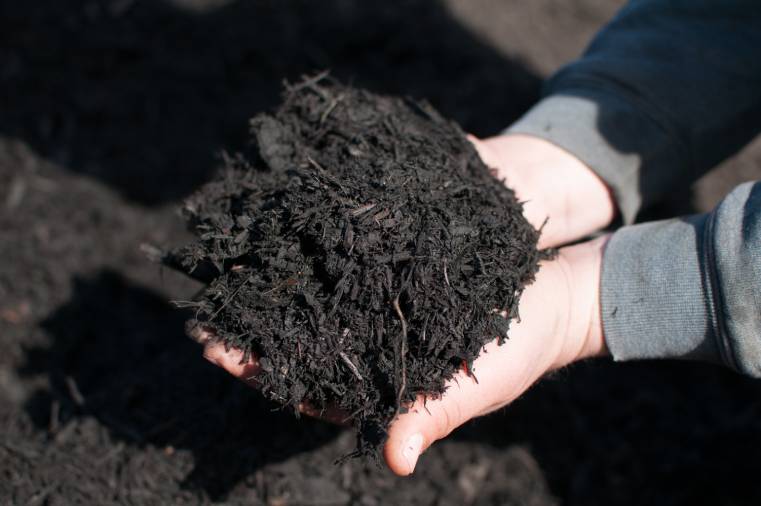
Growing plants in containers is a great option for those with limited space, but if you want the best possible yields, you need to grow them the right way. Mulch has tons of benefits for container plants, but you need to use the right type of mulch to get the desired results.
We understand that gardening can be challenging, and it’s why we wanted to highlight some of the best choices you have when you’re mulching tomato plants in containers.
Top 6 Mulches for Tomatoes in Containers
1. Bark Mulch
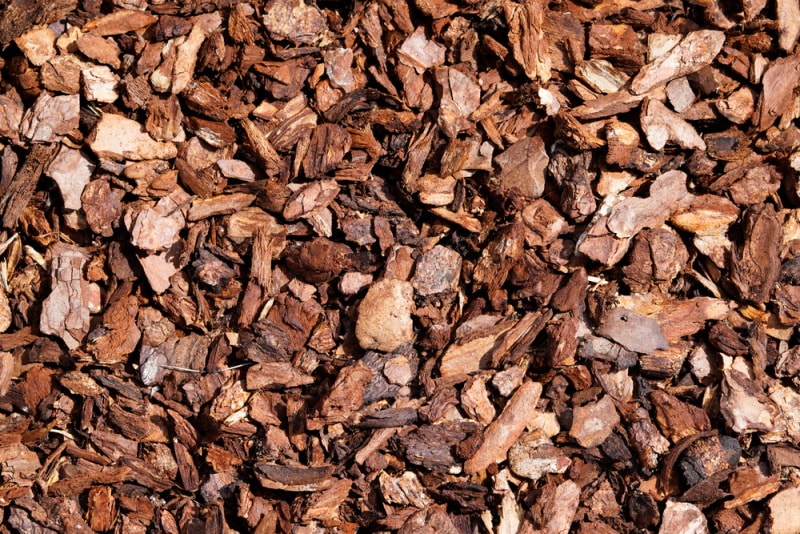
| Cost | Moderate |
| Effectiveness | Moderate |
Bark mulch is a classic mulching option, and it works great for tomatoes in containers. Bark mulch lasts a long time and provides all the benefits of high-quality mulch. The only real downside to bark mulch is that it doesn’t break down quickly, but for container plants, that’s not as big of a deal.
There are tons of bark mulch options out there, and they all provide tons of benefits for tomato plants. It’s easy to apply, but it does cost a bit more. That’s especially true since you’ll need to get new bark mulch each year.
- Organic option
- Easy to apply
- Tons of options available
- Slightly more expensive
2. Wood Chips
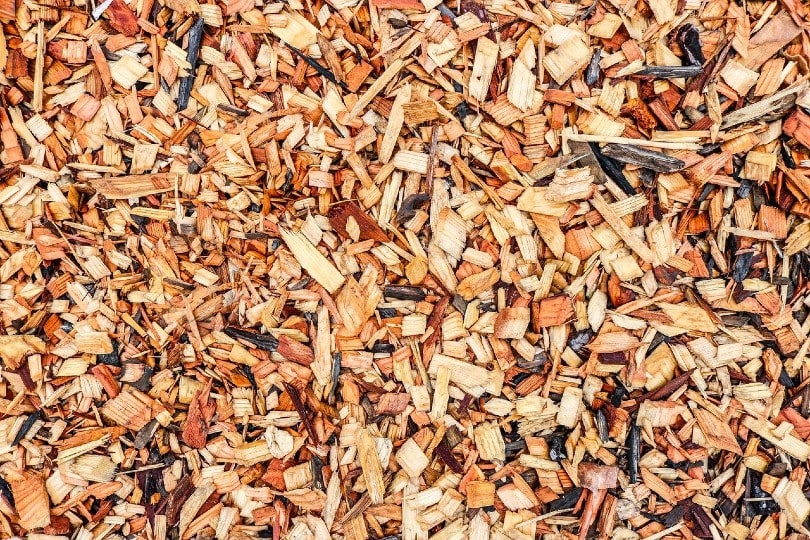
| Cost | Moderate |
| Effectiveness | High |
Wood chips are another classic mulch option that does great with tomato plants in containers. Wood chips break down relatively quickly which helps replenish nutrients in the soil. It also helps retain moisture, insulate the soil, and protect the plant’s roots.
There are tons of different wood chip options out there, which lets you pick out a style and color to match the rest of your landscaping. Wood chips cost a bit more than many other mulch options, but they’re also highly effective and look great.
- Very effective
- Organic option
- Slightly more expensive
3. Straw
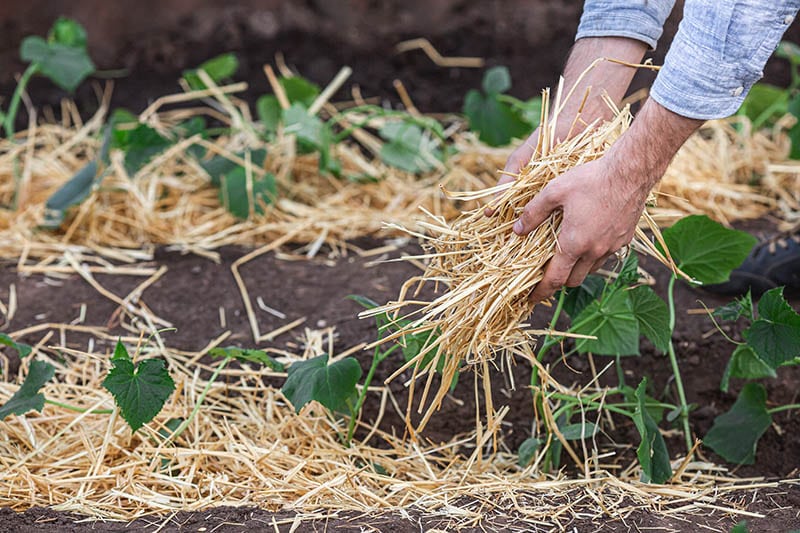
| Cost | Low |
| Effectiveness | Moderate |
Straw is a relatively inexpensive mulch option that makes a big difference for your tomato plants. Straw has great insulating properties and does a great job of retaining moisture, which are both massive benefits for tomato plants.
It also breaks down quickly, adding nutrients to the soil throughout the growing season. It’s not quite as effective as wood chips or bark mulch, but it also costs far less and still does a great job. If you don’t mind the look of straw mulch, you can save quite a bit of money by using it.
- Very affordable
- Easy to apply
- Organic options
- Not the most effective
4. Grass Clippings
| Cost | Low |
| Effectiveness | Low |
One mulch option that won’t cost you a dime if you have a yard is grass clippings. If you collect grass clippings from your lawn, you can use them to mulch around the tomato plants, and there are a few advantages to doing this.
First, grass clippings break down extremely fast, allowing the soil to soak up extra nutrients. Second, you won’t need to pay for any other mulch. Finally, grass clippings provide some insulation to the soil, which can help keep it at a consistent temperature.
However, grass clippings are not as effective as dedicated mulch options, and they can introduce weeds into the container if weed clippings are mixed in with the grass.
- Easy to obtain
- Free
- Organic option
- Not the most effective as mulch
- Can spread weeds
5. Plastic/Rubber Mulch
| Cost | High |
| Effectiveness | Low |
Plastic or rubberized mulch isn’t the best option out there for your container tomato plants, but the great thing about this type of mulch is that it lasts forever. It also comes in tons of different color options you can pick from.
Plastic or rubberized mulch is easy to use, but there’s no denying that it’s a little more expensive upfront and doesn’t provide the same benefits as an organic option. This mulch never breaks down, so it doesn’t provide nutrients to the soil. That’s not as big of a deal for a container plant, but rubberized mulch doesn’t insulate quite as well or direct water away as effectively.
It’s better than no mulch, but rubberized mulch is more about the appearance than anything else.
- You never need to replace it
- Tons of color options available
- Easy to use
- It doesn’t break down
- More expensive option
6. Pebbles
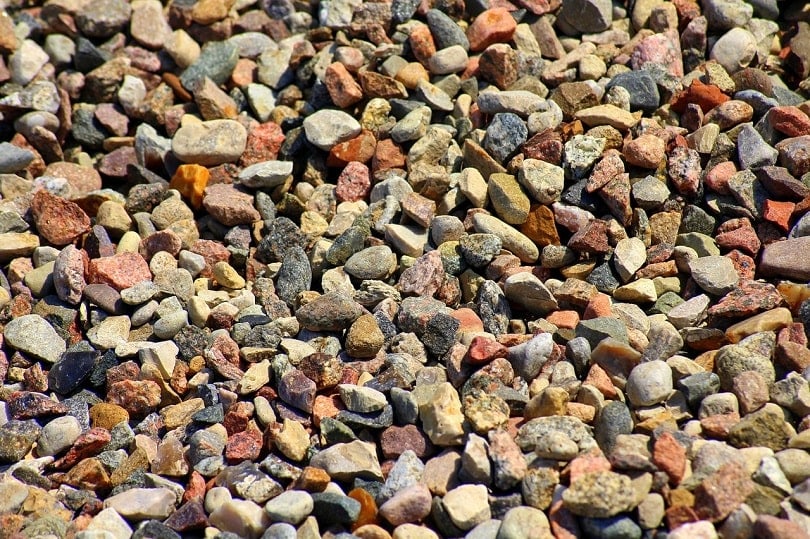
| Cost | High |
| Effectiveness | Low |
Pebbles are another mulch option you have for your container tomato plants if you don’t want to purchase new mulch each year. Pebbles do a great job helping the plants retain moisture, but they don’t insulate as well as organic mulch options.
Additionally, pebbles don’t break down and add nutrients to the soil. Still, pebbles don’t break down, so they’ll last forever, and there are tons of colors and styles available. Pebbles look great and provide some benefits. And once you have the pebbles, you don’t need to worry about buying them again next year.
- Don’t need to replace
- Tons of options available
- Great at diverting water
- Doesn’t break down over time
Why You Should Mulch Tomato Plants in Containers
While many people think about mulching in-ground gardens and flower beds, if you’re growing plants in containers, it’s even more important to mulch them. Container plants tend to dry out faster, and with a water-hungry plant like tomatoes, it can be challenging to get them what they need to thrive.
Mulch helps with this problem. Mulch locks in the moisture into the pot, which gives the roots more time to absorb everything. You’ll still want to use a pot with a drain, but the mulch keeps everything in a happy-medium between too wet and too dry.
Not only that, but in-ground plants have soil that’s a little more resistant to temperature swings. Mulch helps insulate the soil of potted plants, keeping the temperature of the soil consistent for optimal growing conditions.
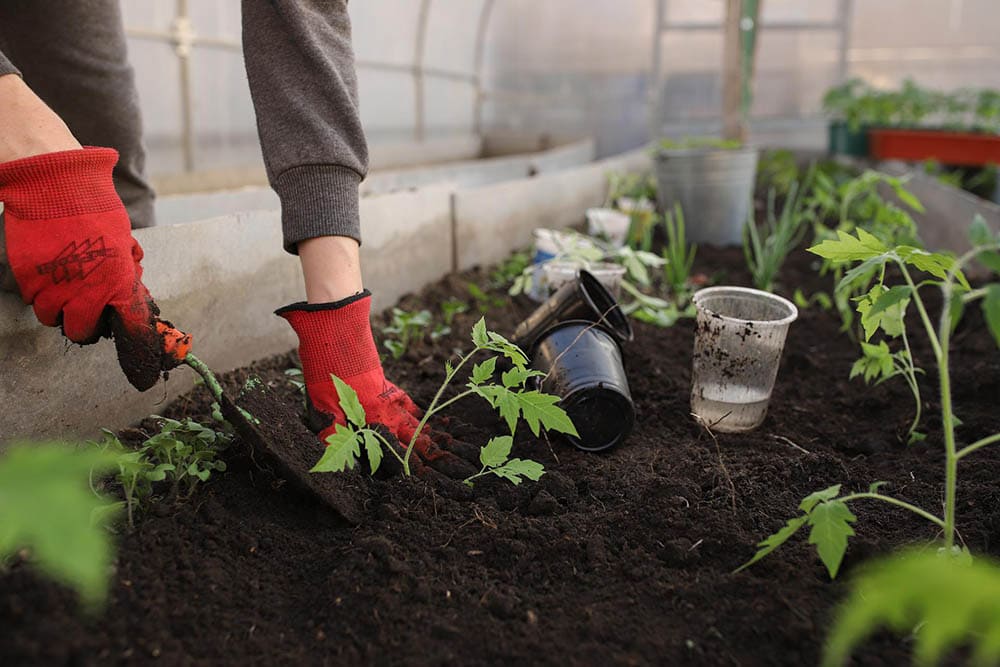
Organic vs. Inorganic Mulch
While some mulch is better than no mulch, if you’re comparing organic mulch to inorganic mulch, organic mulch is the clear winner. Organic mulch breaks down and provides the soil with nutrients, and it does a better job of trapping water in the pot without flooding it.
In fact, there’s really only one thing inorganic mulch does better, and it’s the fact that it can last forever. Inorganic mulch doesn’t break down, so you can use it year after year. And while this is a pretty great perk, you’re not getting the best quality results, but it is better than no mulch.
Conclusion
There’s nothing wrong with growing tomatoes in containers, and if you take the necessary steps, you can get the same yields you would with an in-ground garden!
One of the most important steps is using a high-quality mulch, and with any of the options we highlighted here, you’re well on your way to growing tons of big, juicy tomatoes in your container garden!
See also:
Featured Image Credit: Black Mulches, Shutterstock
Contents


